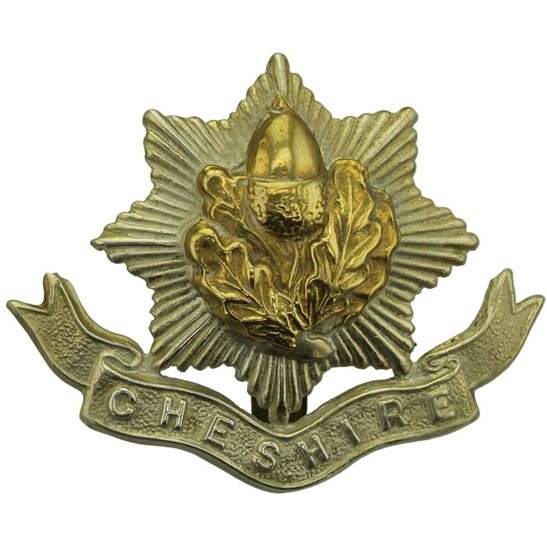Personal Details
Born: 17 June 1892.
Family: The second child of William and Sarah Wilkinson of New Cottages, Darliston, Prees, Whitchurch, Shropshire. He married Annie H Johns on the 29 May 1916 and together they had 3 children – Thelma S E, Dilys M and Mauvis M.
Civilian Occupation: Prior to enlisting he was employed as a farm waggoner. In 1939 his occupation was limber gunner.
Residence: After he left the army, he and Annie moved to Sunnyside, Stepaside, Pembrokeshire, Wales. In 1939 he was living at Glynavon, Narberth, Pembrokeshire, Wales.
Died: In April 1969 aged 76.
Military Details
Regiment: Cheshire Regiment (previously Royal Welsh Fusiliers and King’s Shropshire Light Infantry)
Rank: Acting Corporal
Service Number: 61475 (previously 47398 and 15355)
Date of Enlistment: 9 November 1914
Date of Discharge: 22 May 1919
Reason for Discharge: Demobilisation
George was awarded the Campaign Medals (British War Medal, and Victory Medal).

The British War Medal (also known as 'Squeak') was a silver or bronze medal awarded to officers and men of the British and Imperial Forces who either entered a theatre of war or entered service overseas between 5th August 1914 and 11th November 1918 inclusive. This was later extended to services in Russia, Siberia and some other areas in 1919 and 1920. Approximately 6.5 million British War Medals were issued. Approximately 6.4 million of these were the silver versions of this medal. Around 110,000 of a bronze version were issued mainly to Chinese, Maltese and Indian Labour Corps. The front (obv or obverse) of the medal depicts the head of George V. The recipient's service number, rank, name and unit was impressed on the rim.
The Allied Victory Medal (also known as 'Wilfred') was issued by each of the allies. It was decided that each of the allies should each issue their own bronze victory medal with a similar design, similar equivalent wording and identical ribbon. The British medal was designed by W. McMillan. The front depicts a winged classical figure representing victory. Approximately 5.7 million victory medals were issued. Interestingly, eligibility for this medal was more restrictive and not everyone who received the British War Medal ('Squeak') also received the Victory Medal ('Wilfred'). However, in general, all recipients of 'Wilfred' also received 'Squeak' and all recipients of The 1914 Star or The 1914/1915 Star (also known as 'Pip') also received both 'Squeak' and 'Wilfred'. The recipient's service number, rank, name and unit was impressed on the rim.

